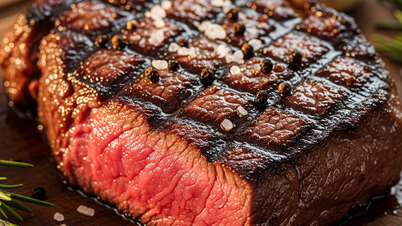Walking speed directly affects the amount of calories burned and the ability to activate the fat burning process. When the heart rate increases moderately, the body begins to use fat as the main energy source instead of glycogen. Therefore, walking fast will help burn fat much better than walking slowly, according to the health website Medical News Today (UK).

Regular brisk walking improves insulin sensitivity and reduces visceral fat
ILLUSTRATION: AI
Brisk walking is defined as walking at a speed of 3-4 miles per hour, or about 100 steps per minute. At this speed, we can talk but not sing.
When walking briskly for 30 minutes, a person weighing about 70 kg can burn about 140-200 calories. Maintaining a fast and steady pace helps increase the heart rate to 60-70% of the maximum heart rate. This is the ideal heart rate to burn fat effectively without causing excessive fatigue.
However, it is important to note that not everyone has the same physical strength and endurance, so it is important to determine the appropriate speed for each individual.
The American Heart Association (AHA) says beginners can start at 2-3 miles per hour, then gradually increase their pace by 0.5 miles per hour each week until they feel a little short of breath. An easy way to monitor this is to use a smartwatch or a step-tracking app to check your heart rate. The ideal goal is to maintain a heart rate between 60-75% of your maximum heart rate.
Weight loss effects of brisk walking
Numerous scientific evidences have shown the weight loss effectiveness of brisk walking. Specifically, research published in The Journal of Physical Activity and Health showed that people who briskly walk at least 150 minutes/week lose an average of 1.5-2 kg in 12 weeks, even without changing their diet.
The reason is that high walking speed helps increase calorie burn after exercise. In addition, regular brisk walking also helps improve insulin sensitivity, reducing visceral fat, which is the type of fat that increases the risk of heart disease and type 2 diabetes.
Another fast walking method that has been shown to help with weight loss is alternating between fast and slow walking. For example, walk fast for 3 minutes, then walk slowly for 2 minutes, repeat for 30 minutes.
Research has shown that this method can double the amount of fat burned compared to walking at a steady pace. In addition, interval walking improves cardiovascular endurance and reduces the risk of injury. This is an ideal choice for those who want to increase the effectiveness of weight loss while maintaining a daily walking habit.
Speed is not the only factor
One thing to keep in mind when walking fast is that speed is not the only factor. Posture also affects the ability to burn fat. When walking, the practitioner should keep the back straight, shoulders relaxed, swing the arms to the rhythm and gently tighten the abdominal muscles. Steps should be moderate, not too long, landing on the heels and gradually spreading to the toes to avoid knee injuries. In addition, you should walk at least 30-45 minutes/day, 5 days/week to achieve sustainable weight loss, according to Medical News Today.
Source: https://thanhnien.vn/muon-giam-can-nhanh-can-di-bo-voi-toc-do-bao-nhieu-185251010195617684.htm



![[Photo] Solemn opening of the 1st Government Party Congress](https://vphoto.vietnam.vn/thumb/1200x675/vietnam/resource/IMAGE/2025/10/13/1760337945186_ndo_br_img-0787-jpg.webp)






























![[Photo] General Secretary To Lam attends the opening of the 1st Government Party Congress](https://vphoto.vietnam.vn/thumb/1200x675/vietnam/resource/IMAGE/2025/10/13/1760321055249_ndo_br_cover-9284-jpg.webp)







































































Comment (0)